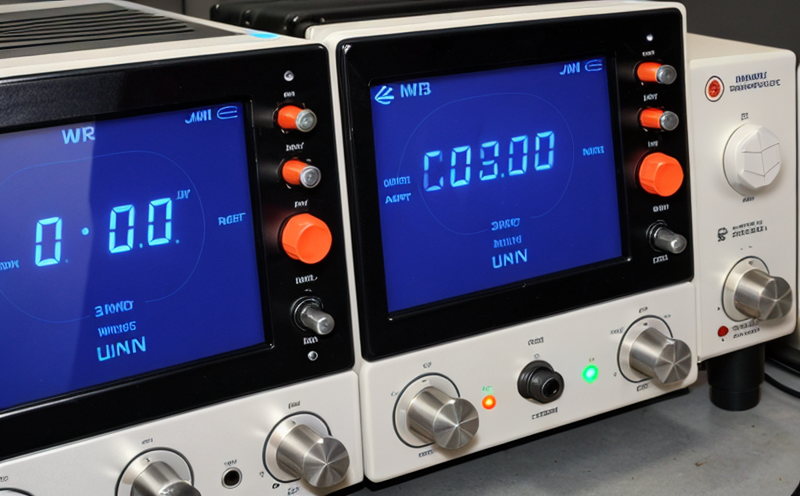EN 302 291 Short Range Device Communication Testing
The European Standard EN 302 291-1 is a critical document for manufacturers of short-range devices (SRD) such as wireless communication devices, IoT hubs, and other connectivity products. This standard ensures that these devices meet the stringent requirements set by regulatory bodies to operate safely within Europe. Compliance with this standard is essential for product certification in the European market.
The primary objective of EN 302 291-1 is to ensure that short-range devices are interoperable and can communicate effectively without causing harmful interference to other systems operating on the same frequency bands. This encompasses a wide range of technologies including Bluetooth, Zigbee, and other proprietary wireless communication protocols used in smart home appliances, connected vehicles, and industrial IoT solutions.
The testing process involves several key components that ensure compliance with EN 302 291-1 standards:
- Frequency Range: Devices must operate within the specified frequency bands. For instance, Bluetooth typically operates in the 2.4 GHz ISM band.
- Emission Limits: Ensuring that devices do not exceed the emission limits set by the standard to prevent interference with other communication systems.
- Sensitivity and Selectivity: Verifying that devices can detect signals from other devices effectively without being misled by noise or spurious emissions.
- Interference Mitigation: Testing for potential interference caused by short-range devices operating in close proximity to each other.
The testing process is rigorous and involves laboratory-based assessments using advanced instrumentation such as spectrum analyzers, network analyzers, and test chambers. These tools allow for precise measurement of device performance under controlled conditions. The results are then compared against the requirements outlined in EN 302 291-1 to ensure full compliance.
Compliance with this standard is not only a requirement for market entry but also helps manufacturers ensure their products meet safety and quality standards, enhancing consumer trust and satisfaction. Additionally, it ensures that devices are compatible across different European markets, facilitating seamless integration into smart home ecosystems and other IoT networks.
Applied Standards
The EN 302 291-1 standard is part of the broader set of regulations that govern wireless communication devices in Europe. It aligns closely with other international standards such as IEEE and ITU-R recommendations, ensuring compatibility and interoperability across different regions.
Key sections within EN 302 291 include:
- Frequency Bands: Definition of the frequency bands in which SRDs can operate.
- Emission Limits: Maximum permissible emission levels to prevent interference with other devices.
- Sensitivity and Selectivity Specifications: Requirements for device performance under various environmental conditions.
- Interference Mitigation Measures: Protocols to minimize the risk of interference between different devices operating on overlapping frequency bands.
The standard also includes detailed test procedures that manufacturers must follow during certification. These tests are conducted in specialized laboratories equipped with state-of-the-art equipment capable of simulating real-world conditions accurately. The results of these tests form the basis for product certification and compliance declarations required by regulatory authorities.
Why Choose This Test
The EN 302 291-1 test is a critical step in ensuring that short-range devices are safe, reliable, and compatible with existing networks. Choosing to undergo this testing offers several advantages:
- Market Access: Ensures compliance with European Union regulations, enabling products to be sold freely throughout the EU.
- Consumer Trust: Demonstrates a commitment to quality and safety, which builds trust among consumers and stakeholders.
- Competitive Edge: By ensuring that products meet or exceed regulatory requirements, manufacturers can differentiate themselves in competitive markets.
- Regulatory Compliance: Avoids the risk of product recalls or legal action due to non-compliance with regulations.
The test also provides valuable insights into potential areas for improvement. Manufacturers can use this information to refine their products, enhance performance, and ensure long-term reliability. This proactive approach not only ensures compliance but also contributes to the overall quality of the product.
International Acceptance and Recognition
- Brazil: The Brazilian National Institute of Metrology, Standards and Industrial Quality (INMETRO) recognizes EN 302 291 for the certification of short-range devices. Compliance with this standard is mandatory for importation into Brazil.
- Czech Republic: The Czech Technical University in Prague uses EN 302 291 as a key reference when evaluating SRD compliance.
- Hungary: Hungarian authorities use this standard to assess the interference potential of short-range devices within their borders.
- Netherlands: The Dutch regulatory bodies recognize EN 302 291 as a valid standard for certification purposes.
The widespread acceptance of this standard highlights its importance in ensuring interoperability and safety across multiple jurisdictions. By adhering to these standards, manufacturers can ensure their products meet the highest international quality and safety standards.





